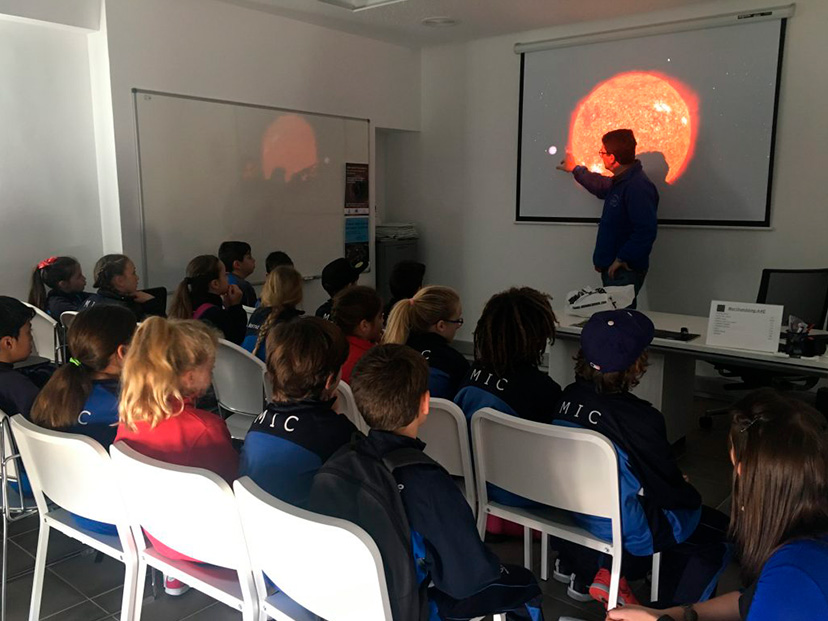It is said that there no sunsets as beautiful as those of Ibiza, yet you rarely hear of the magic that happens when the sun goes down and the stars make their triumphant entrance into the sky. Every night the Ibizan skies provide a glorious panorama of stars, filling the heavens, and visible from almost all points of the island thanks to scant light pollution and due to the way that the population is distributed and dispersed over the island. The Perseids meteor showers, eclipses, red moons or other phenomena that have been visible this summer have featured in the social networks of millions of people fascinated by a spectacle that, while difficult to portray, will nevertheless remain forever etched in their memories.
For those who are interested in the hidden secrets of distant universes, or those of our own galaxy, lying on the beach at night, chilling and contemplating the Great or Little Bears, Pegasus or Orion, is a unique way of enjoying Ibiza, and costs nothing at all. Sleeping in a boat under the light of the stars, relaxing in a country cottage or dining in many of the island’s restaurants while you enjoy this natural spectacle are just some of the ways of losing yourself in worlds other than our own. But did you know that Ibiza also has two observatories where you can learn even more about the magic of the stars and discover something of their history and legends?
Puig des Molins Observatory
Although it was built in 1956, which makes it the oldest observatory in the Balearics, in 2014 it underwent significant technical renovations, updating its computerised resources, along with the purchase of two new telescopes, all financed by the Heritage Consortium. Previously, the observatory was equipped with just one Secretan telescope, donated by a Belgian resident of the island, and dating from the First World War. Today it is on show as a museum piece, nevertheless it served to allow many Ibizans to view the planets, the Moon and the stars for the first time.
The main telescope (a Celestron C14) has significantly improved the capabilities of the earlier instrument, as it has a 380 mm aperture compared to the 160 mm of the older telescope, which means increased magnification without losing any clarity of the image. In this way, on nights with atmospheric stability, you can observe Jupiter, Saturn, or the Moon, providing a spectacle that will remain with you for the rest of your life according to Agrupación Astronómica d´Eivissa, the Ibiza Astronomy Group.
This observatory is not only dedicated to night-time observation, but it is also equipped with a solar telescope, for observing our most important star, the Sun.
The Puig des Molins Observatory welcomed 1900 visitors in 2019, and it also detected several large shooting stars, as it was one of the few centres in Spain that was able to record an exceptionally bright bolide or meteor, which burned even brighter than the full moon. In fact, last year, two new special bolide cameras were installed on the Cala d’Hort telescope, in order to complement the three already operating at Puig des Molins. In this way, the whole sky of the Pityusic islands is covered.
In 2019, a collection of meteorites was acquired which is now on display in the auditorium of the Puig des Molins Observatory. There are a total of 14 pieces, with numbers gradually increasing, and they include material from the Moon, Mars and the asteroid belt.
As a general rule, this observatory can be visited on Tuesday and Thursday evenings and on Wednesdays in the morning. Requests to visit can be made by completing the banner on the website www.aaeivissa.com
Ses Païses de Cala d´Hort Observatory
The Island Council Consell d’Eivissa was responsible for the construction, fitting out and set up of the Ses Païsses de Cala d’Hort Astronomy Observatory, which is also managed by the Ibiza Astronomy Group. The institution facilitated the basic infrastructure for the observatory, adapting and rehabilitating part of the existing installations in the Ses Païsses de Cala d’Hort Ethnographic Museum for this change of use. It also acquired the telescope, frame, camera and computer and telecommunication infrastructure required for remote operation. The observatory also has an electronically operated sliding ceiling.
At the Cala d’Hort telescope, work is also in progress to obtain high resolution photographs, designed to increase the bank of images available for processing in these fields. Similarly, the two cameras installed are used for observation and detection of meteors.
In 2020 there are plans to install a second telescope in Cala d’Hort designed for direct observation, with the idea of receiving visits from secondary schools on certain days of the year, thus serving as an educational complement to those centres. The diameter of the telescope will be half a metre, and it will be able to observe galaxies, nebulae and distant star clusters thanks to its power and luminosity. An educational guide will be published along with installation of this new telescope, which will help to recognise the objects observed and provide information on their main features.

